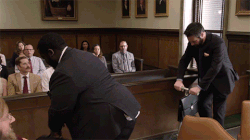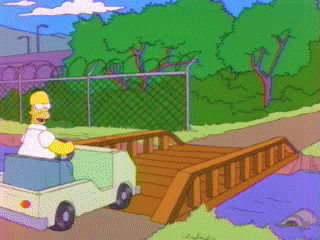- The Scarlet Letter
- Posts
- Dirty Rain
Dirty Rain
Dirty Rain, 52 million, Scootin

Are you interested in sponsoring the best local newsletter on the planet? Reply to this email to help your organization reach hundreds of thousands of engaged Columbusites.
Top of Mind
Ohio’s Dirty Little Secret: When Rain Comes with a Dusting of Texas
If you walked outside and found your car looking like it survived a Mad Max dust storm, you’re not alone. Central Ohioans woke up to a fine layer of mystery grime on their vehicles, prompting widespread confusion and an immediate surge in car wash visits. Was it pollen? A freak accident at a nearby cement plant? Divine intervention reminding us that spring cleaning is overdue?
Nope. Turns out, we got a special delivery from Texas.
The Great Dust Migration
What looked like some overdue yard work gone wrong was actually the result of a massive dust storm out of Texas and New Mexico. Thanks to winds gusting up to 62 mph, the storm kicked up a thick cloud of dust, which then hitchhiked on high-altitude winds across multiple states before finally crash-landing here in Ohio, courtesy of a Friday night rainstorm.
The National Weather Service confirmed that we weren’t the only ones blessed with a fine layer of Southwestern seasoning. Reports of dirty rain came in from Missouri, Illinois, and West Virginia as well, meaning your weekend car wash was just part of a multi-state deep clean.

A Natural Reminder That What Goes Up Must Come Down
While this might seem like a freak event, dust storms like this have a habit of going airborne and traveling long distances. It’s how we occasionally get Saharan dust all the way from Africa, or, in this case, how we get Texas all over our windshields. Rain acts like nature’s scrubbing brush, pulling all sorts of airborne particles back to Earth, including dust, pollution, and whatever else we’ve been launching into the atmosphere.
The good news? This particular dust isn’t hazardous. The bad news? Mother Nature didn’t have the courtesy to include a rinse cycle.
Dust in the Wind… and on Your Car
This won’t be the last time the atmosphere decides to share its leftovers with us. So next time it rains mud, just remember, you’re not dirty, you’re just well-traveled.
Scarlet Letter Trivia
Question: What year did Dublin, Ohio, begin its famous Saint Patrick’s day celebrations?
A) 1942
B) 1960
C) 1981
D) 1969
Columbus Rolls Out a New Ride, Scooter Gang Assemble!

Gif by jcampbell003 on Giphy
If you’ve ever seen a scooter abandoned in the middle of a sidewalk like a toddler throwing a tantrum, you already know Columbus’ shared mobility program has had issues. But now, the city is rolling out a new and improved bike-and-scooter rental system, one they swear will be less chaotic, more accessible, and actually work.
Last weekend, Columbus replaced CoGo with Veo, the city’s new micromobility partner, while Spin (which sued its way into the deal) will also keep its fleet on the streets. The result? A mix of bikes, scooters, and seated scooters that aim to make getting around easier, if everyone follows the rules.

I must say I do dig the blue, and the seated option
What’s Rolling Out?
Columbus is launching up to 4,000 rental vehicles, split between Veo and Spin. Here’s what you can expect to see zipping through downtown:
🚲 Pedal Bikes – Old-school. Simple. You’re the engine.
⚡ Pedal-Assist E-Bikes – Less effort, more speed. Great for when you want to move fast without looking like you’re trying too hard.
🛴 Standing Scooters – For when walking is too slow, but biking feels like a commitment.
🪑 Seated Scooters – A new addition, perfect for anyone who wants to scoot in comfort.
👫 Two-Seated E-Bikes – Grab a friend. Or don’t. Either way, you’ll have an extra seat.
The rollout starts with 500 vehicles, with plans to ramp up in the coming months.
New Rules (Because We Clearly Needed Some)
If Columbus’ last attempt at rentable scooters taught us anything, it’s that people will park them anywhere, middle of sidewalks, in bushes, tipped over like a defeated knight. This time, the city is not playing around when it comes to parking.
✔️ Photo Proof Required – At the end of your ride, you must submit a picture proving you parked the scooter in a proper location (bike rack, scooter corral, or an approved sidewalk area).
✔️ Fines for Scofflaws – Park it in a crosswalk, in front of a business, or just leave it wherever? The city could fine you (but they’ll start with warnings).
✔️ More Parking Spots Coming – Columbus says it will reinvest its micromobility profits into building more designated parking areas. Because, apparently, people need reminders not to block an entire sidewalk.
How Much Will It Cost?
💲 $1 to unlock
⏳ $0.25-$0.50 per minute, depending on the ride
🎉 $5 off for first-time riders with code CBUS25 (through April 30)
🚲 Former CoGo members get a free 6-month Veo membership
📉 Low-income riders can apply for discounts through Veo Access
The Spin Lawsuit—A Plot Twist
Originally, Veo was going to be Columbus’ exclusive micromobility provider, replacing CoGo and cutting Bird and Lime out of the equation entirely. Then, Spin sued the city, arguing that the Department of Public Service didn’t follow its own criteria for awarding the contract. Rather than dragging things out in court, Columbus struck a deal, now Spin gets a contract, too.
So instead of a single company running things, Columbus will now have two competing scooter fleets, both with the same rules, pricing, and city revenue sharing requirements. More options, less monopoly, same old scooter drama.

Gif by basketsfx on Giphy
Will This Work?
Columbus has tried, and failed, at managing rental scooters and bikes before. The difference this time? Fewer vendors, more variety in ride style, and actual rules people might actually follow.
Will people embrace seated scooters? Will parking fines curb sidewalk chaos? Will Spin and Veo play nice?
Time will tell. But for now, if you see a scooter neatly parked where it should be, just know, that somebody, somewhere, really wants their $1 deposit back.
Columbus’ Infrastructure Boom Continues: $52 Million in New Projects on the Way
If it feels like Columbus is getting a new project announcement every other week, you’re not imagining it. In yet another round of major investments, the Mid-Ohio Regional Planning Commission (MORPC) just allocated $52 million for new infrastructure projects across Central Ohio. This funding, part of the region’s ongoing push to modernize roads, bridges, and public transit, aims to create safer, more connected communities while keeping up with the area’s rapid growth.
For anyone keeping score, this follows a string of high-profile investments that have been pouring into Ohio: Intel’s $20 billion semiconductor plant, Honda’s EV battery plant, the First Quality Tissue mega facility in Defiance, and a billion-dollar autonomous weapons system plant in Pickaway County. While those are major job creators, this latest funding round focuses on how we actually get around in a region that’s bursting at the seams.
What’s Getting Funded?
MORPC received $160 million in funding requests from local governments and agencies across Central Ohio but had to narrow it down to seven key projects resulting in $52 million that will have the greatest impact. Here’s where the money is going:
🚴 East Broad Capital Trail (Columbus) – $9.3 million
A new multi-use path to improve bike and pedestrian access on the East Side.
🚦 Trabue Road at Walcutt Road (Columbus) – $7.3 million
Major intersection improvements on the city’s Far West Side.
🌉 Emerald Connector Bridge (Dublin) – $4.5 million
A new bridge over I-270 to better connect Dublin’s growing neighborhoods.
🚧 Southwest Regional Medical & Innovation Gateway Overpass (Grove City) – $2.6 million
A new bridge over I-71 to improve access to medical and innovation hubs in Grove City.
🛣️ East Cooke Road Phase 2 (Columbus/Franklin County) – $9.1 million
A long-overdue reconstruction of Cooke Road between Glenmawr Avenue and Karl Road.
🚎 East Main Street Bus Rapid Transit (Columbus) – $14.4 million
Improvements to Columbus’ first bus rapid transit (BRT) corridor on the East Side.
🌳 Big Walnut Trail Extension (Columbus) – $4.7 million
Expanding the Big Walnut Trail between Cherrybottom Park and Morse Road.
That last one should be exciting news for anyone tired of dodging e-scooters on High Street, Columbus continues to invest heavily in multi-use paths, expanding alternative transportation options across the city.
The Big Picture: More Money, More Growth
In total, MORPC has now committed over $340 million to future infrastructure projects in the region. And these investments aren’t just about laying down concrete, they’re about preparing for what’s next.
Columbus is one of the fastest-growing metro areas in the Midwest, adding 50,000 residents every year. That growth has made infrastructure investment a necessity, not a luxury. More people means more cars, more public transit demand, and more need for safe biking and walking options.
Plus, let’s be honest: our roads aren’t exactly winning awards.
🚧 Columbus drivers waste an average of 40 hours a year sitting in traffic.
🚨 The city has seen a 30% increase in pedestrian and cyclist deaths in the last five years.
🚌 And public transit? Let’s just say it’s improving, but a true rapid transit network is still a dream.
So while these projects might not grab the headlines like billion-dollar factories, they are the backbone of a functional, growing city.
Follow the Money
Where is all this cash coming from? Unlike some of the state’s flashy economic development deals, these infrastructure projects are largely federally funded through MORPC’s Attributable Funds program. Every two years, MORPC hands out federal transportation dollars to Central Ohio cities, towns, and counties based on project impact and readiness.
MORPC’s Chief Mobility and Development Officer Parag Agrawal framed it this way:
“The $52 million commitment will enhance the multimodal transportation network, promote walkable and bikeable neighborhoods, and enhance roadway safety.”
In plain English? More bike lanes, better roads, fewer terrible intersections.
So What’s Next?
🚧 Construction timelines will vary, but most of these projects will begin within the next few years.
🏗️ The state is expected to continue investing heavily in infrastructure as more companies move in.
🚲 Bike, pedestrian, and transit projects are finally getting real funding—could Columbus actually become a walkable city?
It’s too early to tell, but one thing is clear: Columbus is trying its best to keep up with the growth.
C) 1981: Given the name of the city you think they would of started way sooner!

Cya round!




